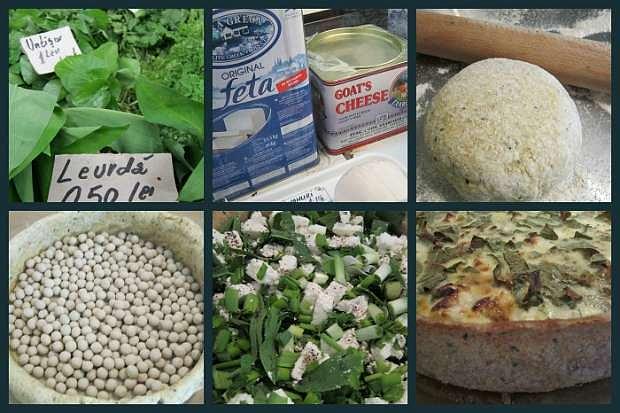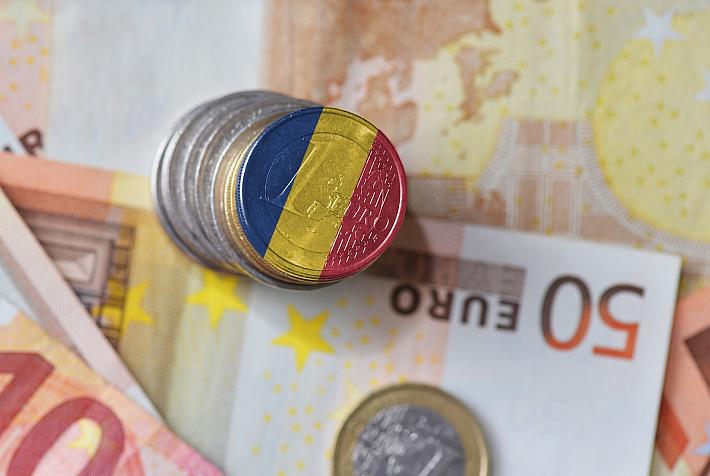Rachel's Recipes: Fresh Herb & Goat’s Cheese Tart with “good oil” pastry

Yes I know I have a thing about all things goaty (not to be confused with goatee) but really this is a brilliant combination and not just another excuse to eat goat’s cheese! With so many beautiful fresh herbs in the market in Spring I constantly think of ways to capture their fresh subtle tastes and the savory custard that is a quiche or savory tart filling absorbs and amplifies flavors wonderfully.
For those of you with a pastry phobia fear not! The “method” is merely to mix all ingredients together until a pliable soft dough is formed. And unlike butter based pastries you don’t need to worry about resting the pastry and then chilling the case before cooking to prevent shrinkage. This pastry really is a boon for busy health conscious cooks! The pastry uses only “good oils”, some wholemeal flour and semolina (‘gris”) to give crunch. Yes you do need to bake the pastry first to avoid a soggy bottomed tart (perish the thought) but thereafter you just sling in the ingredients and let it cook until firm while you test the rosé that goes so brilliantly with the tart and a salad of butter lettuce, radishes, spring onions and fresh herb leaves with a tahini dressing.
This recipe makes a deep quiche (I have rings I bought at Mora in Paris that produce the traditional deep rustic French quiche, which I am very attached to…and so I should be as I almost needed a mortgage to buy them) so if you find yourself with a little extra, just oil generously a muffin tin and make small “no pastry” snacks…in fact this recipe works well as do most quiche fillings without the pastry in well oiled baking molds.
Gadgets & Gizmos
I personally always prefer loose bottomed metal quiche tins but if you have a ceramic quiche dish that is fine too…anyhow without being pedantic a good tin for savory and sweet tarts is a good thing to use. Failing this, a small brownie tin might just work but your pastry might collapse in on itself as the sides are relatively high. This recipe is for a 22cm tin 4.5 cm deep – most quiche tins and dishes are not so deep - which is why I suggested what to do with any leftover filling mix!
Ingredients – serves six to eight and freezes cut into portions very well
The greenery is for guidance – the joy of this type of recipe is using what you find in the market.
The Filling
1 small bunch of “leustean” (lovage). This is a very aromatic herb so is usually used sparingly, however I like how it is with the zingy cheese.
6-8 leaves of “Stevie” or large proper spinach not baby spinach. Probably a whole packet of baby spinach could be used but that kind of defeats the object of using what's fresh in the market
1 bunch of parsley roughly chopped
3-4 spring onions roughly chopped
A bit of left over basil, some “loboda” leaves, other greenery that takes your fancy
300g Goat’s feta or “telemea de capra”
400ml of Goat’s yoghurt/milk mixed depending on the size of tub of the yoghurt. If you can find Goat’s buttermilk (“lapte de batut” even better and easier)
No salt because the goat’s cheese is quite salty, a little pepper
The “Good Oil” Pastry
175g wholemeal flour
75g semolina (“gris”)
A handful of poppy seeds or black mustard seeds
80ml of best unfiltered/bio olive oil, hemp oil (“ulei de canepa”), soya oil
100ml water (you can use leftover wine too)
1 tsp salt
HOW TO
Pastry
Combine all the ingredients in a bowl gently using a spoon until they all come together and the dough leaves the sides of the bowl cleanly.
Roll out the pastry and line your quiche tin.
Scrunch up a piece of baking paper (“hartie de copt” ) and un-scrunch it. Sounds weird but this works and the French (naturellement) even have a special word for this…which I have forgotten right now…anyhow… the scrunched up paper will now sit easier in your dish. Fill with ceramic baking beans, white beans “fasole” or just rice.
Bake the pastry case blind at 180C, i.e. bake it 15-20 minutes with the beans in. Take them out by which time the pastry will be pretty solid and won't have bubbled up or collapsed in on itself. Phew! Pop it back in the oven and if you want a real touch of professionalism and an absolutely watertight base then paint it with a beaten egg before putting back in the oven. Bake until lightly golden verging on light brown. Cool it down a little but it can still be warm when you put the filling in provided you bake it immediately.
Filling
Chop up all the green leaves and the spring onions and place in the pastry case. The greenery should kind of be spilling over the top and you should have the urge to press it down and make it behave. A firm hand is best. Chop the cheese into rough cubes and scatter over the greenery in an artistic fashion. Now just lightly whip the egg/yoghurt/milk mixture together and pour over the green stuff and lightly fork over to make sure there are not massive nooks and crannies of air. the egg should be level with the top of the pastry case – this makes things a bit precarious when you place it in the oven so place on a tray before placing in the oven to avoid a burnt puddle of egg goo on the base of your oven. Oven cleaning not fun.
Bake again at 180C for anything between 20-30 minutes until the top has light brown spots and is definitely firm to the touch – you don’t want uncooked egg in the middle. Sometimes if the oven is fierce, I switch down to 160C and let the custard bake at a more leisurely pace. I was going to scatter some delicious mature Dutch goat’s cheese over the top just to give a lovely topping but I ate it instead with some “jamon”.
Serve warm or cold with a salad and a glass of something chilled. If you want a little more substance then add some boiled new potatoes dribbled in olive oil or some couscous with fresh herbs.
By Rachel Sargent















